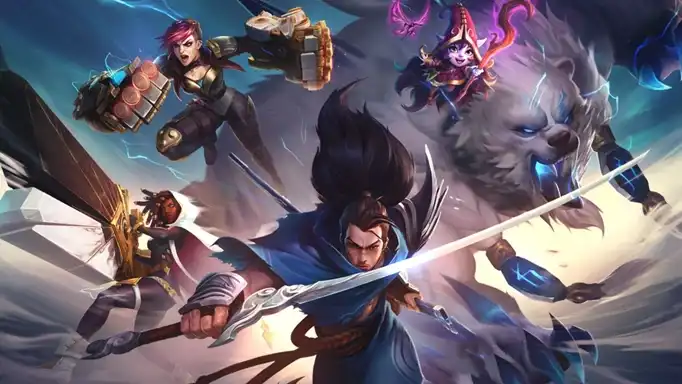League of Legends is an online video game that is significantly popular among the gaming community. Ranking in this game is of high significance, understood through various divisions and leagues. Common ranks are Bronze, Silver, Gold, and so on, with multiple divisions within each rank.
Players aim to progress from one rank to another, striving for improvement. This transition is, however, not easy and can be attributed to both the player's skill and the game's matchmaking system designed to create balanced teams. The matchmaking system heavily influences each player's journey through the ranks.
Despite being designed to create balanced and fair games, the matchmaking system is often subjected to criticism from players. An odd case occurred when a player ranked Silver V in League of Legends challenged a Gold ranked player. This event sparked a lot of questions about the legitimacy of the matchmaking process.

The Silver V player was fairly new to ranked games, assumedly less skilled due to their ranking in the lower division. The Gold ranked player, on the other hand, was a seasoned player, obviously expected to be much more skilled than their Silver counterpart.
The matchmaking system is based on MMR (Matchmaking Rating). MMR is a hidden number representing a player's skill level. It increases when you win and decreases when you lose. It is important to note, your displayed rank like Silver or Gold doesn't directly influence who you get matched with.
The player-played game outcomes allow MMR to adjust, ensuring players of similar skill levels are matched in future games. Hence, the MMR acts as the deciding factor for creating balanced teams rather than the visible ranks.
The apparent mismatch might make sense if we delve deeper into the system's workings. The Silver ranked player could have a higher MMR than the average Silver V. Some possible reasons include their good performance in early ranked games, contributing to a potentially higher MMR.
On the other hand, the Gold ranked player might have an MMR on the lower side. Their recent match performance could have impacted their MMR, resulting in them paired with someone from a lower rank. However, this is all speculation since Riot, the game's developer, keeps MRM calculations hidden.
The only way to provide a definitive answer to why such matchmaking occurred would be to analyze their previous match data. Having access to their past game history and performance detail might explain the disparity. But these statistics are kept confidential and players can only speculate.
Frustration and confusion typically surround such scenarios. Players feel that the current rank should matter as much as the invisible MMR in matchmaking, as visible ranks also partially reflect a player’s skills and experience level.
The matchmaking system indeed has room to improve, considering apparent issues like the one at hand. Players expect a balance in the current rank as well as the MMR. The current rank also carries a sort of psychological effect - if a Silver player sees that they are up against a Gold player, it's very likely to cause them stress.
This undue stress might impact their performance in that particular game. Hence the matchmaking system should strive to minimize such occurrences for it to be deemed 'fair' in the eyes of the players.
Moreover, transparency should be improved, giving a clearer understanding of why they are matched against certain players. A clearly defined algorithm would help eliminate the guesswork involved on the player's part.
Another angle to look at would be from the developer's perspective. Perhaps there aren’t enough players of the same ranking online at the same time. The system might then be forced to match players from different ranks to create a game.
Making sense of such matchmaking anomalies requires a wider perspective. It comes down to the balance between player skill level, the number of players online, and the algorithm's attempts at creating competitive yet fair matches.
Continuous updating and tweaking of the matchmaking system based on player feedback and experiences will lead to a better balance. And while the perfect algorithm might be a long way off, the game developers are certainly aware of the ongoing issues and are likely working towards solutions.
To sum up, the seemingly odd case of a Silver-ranked player being matched against a Gold one might not be that strange if we look at the broader picture. It's all about the balance at the end of the day - and achieving that balance is both science and art in the world of online multiplayer games like League of Legends.
Therefore, players are encouraged to keep providing their valuable feedback while continuously improving their skills. After all, the thrill of the game lies in overcoming challenges and progressing through the ranks, one game at a time.